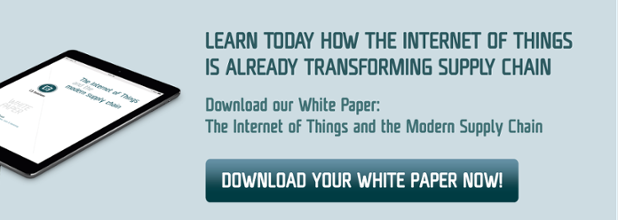Cyber Crime: Safeguard your Security in the Internet of Things World

Cyber threats are on the rise in the world of Internet of Things. A study completed in late 2023 shows that cyber breaches affecting companies’ supply chains climbed by 26% from 2022 to 2023.
This should be a serious concern for any company. Why? Because a cyber attack will cost you money, lost sales and loss of reputation, not to mention additional downstream risks if customer and supplier data obtained through a cyber breach is sold to third parties.
Understanding Cyber Crime
Cyber crime is a pressing issue in today's technology-driven world, impacting individuals, businesses, and governments globally. In this blog, we'll delve into what cyber crime entails, explore the various types of cyber crimes, and discuss strategies for prevention.
What is Cyber Crime?
Cyber crime refers to criminal activities carried out by means of computers or the Internet. These illegal activities can target networks, devices, or data, and often aim to damage, steal, or disrupt digital life. As technology evolves, so does the complexity of these crimes, making them both more sophisticated and more challenging to prevent.
Types of Cyber Crimes
Cyber crimes can be categorized into several types, each with unique targets and tactics:
1. Phishing
This type of cyber crime involves tricking individuals into giving away confidential information such as passwords, credit card numbers, and other personal data. Phishing attacks typically use fraudulent emails or websites that mimic legitimate ones.
2. Malware Attacks
Malware, short for malicious software, includes viruses, worms, Trojans, and ransomware. These harmful software programs are designed to infiltrate and damage computers or networks, steal data, or gain unauthorized access to systems.
3. Identity Theft
Cybercriminals use various methods to steal personal information to impersonate or steal from their victims. This can include accessing personal information through breaches or social engineering tactics.
4. Cyberstalking
This involves using the Internet to stalk or harass an individual, group, or organization. It may include the monitoring of online activities, the collection of personal information without consent, and other forms of invasive behavior.
5. DDoS Attacks
Distributed Denial of Service (DDoS) attacks aim to take down websites and online services. They work by overwhelming the target with a flood of internet traffic, which can cripple websites and be costly for businesses to mitigate.
6. Cryptojacking
Cryptojacking is the unauthorized use of someone else's computer to mine cryptocurrency. Hackers install software that utilizes the victim’s processing power to mine cryptocurrency, often without the user's knowledge.
7. Cyber Espionage
This involves hacking into systems to steal classified or sensitive information often for political, military, or economic advantage. It is primarily targeted at government networks, defense contractors, and large corporations.
Why you should pay attention to the boom in cyber crime
The average cost of a cyber attack leading to a data breach has been pegged at US$4.45 million according to a study by IBM And the Ponemon Institute, a thinktank devoted to information security. For Canadian companies the number is a staggering CA$6.94 million. In 2023, the global cost of cyber crime is estimated to be US$8.15 trillion, and is continuing to climb rapidly.
According to IBM’s study, the most common type of cyber attack is still the simple phishing gambit, where your employee is induced to click on a link in an email which then unleashes malware into your network. These represent 17% of attacks on Canadian companies and end up costing the affected organization an average of $6.98 million.
These kinds of social engineering attacks, where the criminal deceives or manipulates an employee into sending information or clicking a link, have increased by nine percent in the past year, showing attackers increasingly relying on human error and pressure tactics. The costs associated with social engineering attacks have increased 37 percent in a year.
The Age of Internet of Things
Security and privacy are huge new concerns in the age of the Internet of Things. With objects talking to each other, transmitting information about where they are and what's happening to them, the opportunity for criminals to intercept and steal data is expanding exponentially.
Massive data breaches are already a threat as hackers seek to steal private information stored in corporate and government customer databases. Add to that the risks inherent in using a smartphone for transactions such as banking and tap-to-pay applications, and the stakes rise even higher.
And yet, confidence in those collecting the information is low. Government agencies and telephone companies received only a 31% vote of confidence that they would keep private records secure. Credit card companies are viewed somewhat more highly, with 38 percent expressing confidence in the security of their data. [1]
The pressure is on for companies to ensure they have the best possible protection for their data, and that entrusted to them by clients.
With the rapid evolution of the Internet of Things, "the attack surface for adversaries is target-rich". [2] In other words, every time a new application is born there is potential for exploitation by the unscrupulous. Data security needs to be as important as the application that uses that data.
A little more unsettling is the notion that existing technology vendors may have forgotten some of the security lessons learned during the early years of networking and cloud computing. And new vendors pushing into the market have not learned them yet. [3]
That's why a group of developers has come together to create the Internet of Things Security Foundation. It's a non-profit, vendor-neutral and collaborative effort "designed to propagate good security practice, increase adopter knowledge and raise user confidence." [4]
"When adopting IoT it is crucial for businesses to factor in security aspects from the start of the initiative," says Foundation member Elevenpaths in its paper Insecurity in the Internet of Things. "Creation and employment of procurement standards for IoT devices is essential, particularly in this nascent stage of the lifecycle, applying lessons in network, application and cloud security." [5]
The good news is that because of the Internet of Things' immaturity—it’s not likely to reach widespread implementation for five to 10 years—there is time to ensure that "security by design" is reinforced as a key principle in IoT technologies.
The lesson is that IoT security needs to be a boardroom concern for companies embarking on IoT-enabled enterprise.
As the Foundation points out, "with more than just reputations at stake, it is imperative that technology providers, system adopters and users work together to ensure security is fit-for-purpose. It is fundamental to the adoption of systems and reaping the social and business benefits." [6]
It's clear that an extremely cautious, eyes-open approach is needed to ensure the success of any IoT venture. Your company's reputation, and entire business model could be at stake and open for the taking if your security measures aren't ready for a potential attack.
We invite you to download our white paper ‘The Internet of Things and the Modern Supply Chain’ for more information on the subject.
What you can do
While it may not seem immediately connected to supply chain operations, this kind of cyber crime can easily be reduced by making a change to how you manage your inbound and outbound transportation. That change is using a dock scheduling software like C3 Reservations.
By adopting a cloud-based system that looks after scheduling the arrival of trucks at your dock doors, you remove the risk that scheduling by using email can introduce. When there are dozens or hundreds of emails flying back and forth between your warehouse operations staff and various carriers, trying to coordinate loads, it’s so easy for a staff member to make a mistake. A spoofed email address that looks like it comes from a trucking company might be all it takes to make them click a link or reveal information that can unleash a full-on cyber attack.
And of course, there are numerous tangible benefits to your operations that you’ll gain by adopting dock scheduling. You’ll save time and labour, gain more control of your inventory and achieve better throughput rates in a fast-paced operation. You won’t need dedicated staff who are glued to their phone and email to manage inbound loads anymore. C3 reservations automates the process, making communication with carriers seamless and instantaneous.
What we do for you
But coming back to security, there is still the question of putting your trust and information into a cloud-based product. C3 Solutions has you covered.
The company is now ISO 27001 certified. That means C3 Solutions has demonstrated that it meets the highest standard for information security. In the face of an increasingly threatening world of cyber risks, this gives you peace of mind.
The company spent about five years preparing for and going through all the necessary steps to achieve the certification. And it means that customers can rest assured that their data will be protected while they are using a C3 product. The certification ensures the integrity of customers’ data.
And it’s not just a one-and-done deal. C3 now continually monitors, and reviews its own compliance, with a team of senior managers who make sure every employee is trained and up to date on the correct security protocols.
Risk management pays off
It’s a tough world for businesses. Digitization has been a tremendous boon, delivering visibility, speed and accuracy in companies’ supply chain operations. We are achieving operations milestones now that were inconceivable just 20 years ago, thanks to myriad new tools on the market. C3 Reservations is just one excellent example of how software systems can streamline and cut costs.
But with digital advancement we’ve also seen criminals adopting digital tools to claim ransoms and sell private data. That’s the risk environment we operate in, and you cannot ignore it.
So it makes sense to collaborate with suppliers, like C3 Solutions, who in addition to offering systems that help you take the risk out of your operations, also treat information security as a key priority. If you want to protect you company, give us a call and we’ll show you how we do it.
References:
- Americans’ Attitudes About Privacy, Security and Surveillance, Mary Madden and Lee Rainie, Pew Research Center, May 20, 2015. www.pewinternet.org/2015/05/20/americans-attitudes-about-privacy-security-and-surveillance/
- IoT Security Foundation website. https://iotsecurityfoundation.org/about-us/
- Precis of Trend Report: Insecurity in the Internet of Things. IoT Security Foundation website. https://iotsecurityfoundation.org/report-insecurity-in-the-internet-of-things/
- IoT Security Foundation website. https://iotsecurityfoundation.org/about-us/
- Trend Report: Insecurity in the Internet of Things, Telefonica, 06/10/2015. [https://www.elevenpaths.com/wp- https://www.elevenpaths.com/wp-content/uploads/2015/10/TDS_Insecurity_in_the_IoT.pdf]
- IoT Security Foundation website. https://iotsecurityfoundation.org/about-us/.


